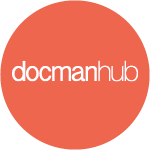Dean Grinham, IT Head of Programme Delivery, University Hospitals Birmingham NHS Foundation Trust states “The cost of sending paper to GP practices at a minimum is 50p per item, without taking into account paper, envelopes, printing, and the time to do this process means that the Trust could save a minimum of £10,000 each month.”
“We have a process in place so that before a patient is discharged, the discharge letter must be completed. Some practices in the area are collecting from the Hub every 15 minutes; this means that a GP could be reading the patient letter before the patient has even reached the lift to exit the Hospital.”
The innovative electronic document transfer project was part of the Trust’s strategy to become completely electronic, paper-light and to meet the 24 hour discharge summary turnaround target. The project was deployed at the same time as the Trust developed and implemented their own electronic patient record, the Clinical Portal.
 Rachel Wells, IT Project Manager working in close partnership with the Birmingham and Solihull Cluster, initially went through a proof of concept with one practice and immediately recognised the benefits. “We agreed it was a sensible approach to roll-out Docman Hub on a practice by practice basis where Docman GP was already in use for manual scanning. Our Docman Hub is currently active for sending digitally dictated letters, in patient and daycase discharge letters, A&E discharge letters, and other patient correspondence to practices in the area. This enables practices, irrespective of their clinical system, to receive electronic documents from our Docman Hub.”
Rachel Wells, IT Project Manager working in close partnership with the Birmingham and Solihull Cluster, initially went through a proof of concept with one practice and immediately recognised the benefits. “We agreed it was a sensible approach to roll-out Docman Hub on a practice by practice basis where Docman GP was already in use for manual scanning. Our Docman Hub is currently active for sending digitally dictated letters, in patient and daycase discharge letters, A&E discharge letters, and other patient correspondence to practices in the area. This enables practices, irrespective of their clinical system, to receive electronic documents from our Docman Hub.”
GP practices using Docman to receive these letters benefit from maximum time savings. The documents arrive into Docman with attached meta-data, the information required to file the document. This information is pre-populated in to the filing fields so the administrator doesn’t need to manually pick the information from the letter. This process is estimated to save administrators up to 50 seconds per letter; meaning up to an hour of staff time can be saved daily for a practice. The intelligent workflow tools within Docman enable a streamlined one click workflow philosophy to further save time in processing documents around the practice.
EDT is able to collect from multiple message streams enabling practices to receive from multiple document sources in the same Trust or from neighbouring Trusts. No matter how many streams a practice collects from, all documents are delivered into Docman. This is convenient both in practical terms for the clinician and from an audit/clinical governance point of view.
Rachel continues “In March 2012 the Trust sent 15,000 documents electronically from our Docman Hub, which is increasing monthly. The Trust now aims to hit the target of sending 20,000 letters per month. This will be done by connecting more practices to the Hub as additional practices are planned for implementation across the wider Birmingham area and beyond.”
“From our generating systems once a letter is ready to be distributed and printed, the user clicks to distribute a document and a splash screen appears. As an example – in our DPM application (Document Production Module), which is used to approve and distribute our digitally dictated documents electronically, the following message appears to the user – “A copy of this document will be electronically sent to the GP practice, the number of print copies has been reduced by 1” – this prevents the user from having to print and post an unnecessary paper copy to the GP practice.”
 “One of the benefits is that the practices receiving documents electronically will not need to call the hospital to find out information that previously they might have had to chase because of possible delays with a paper and postal system. If a letter was completed to go on Friday, it could mean that the actual letter was only collected and processed in the mail room on Monday, meaning delays until it reached the practice. The system has enabled a streamlined approach to managing information and has improved our admin service.”
“One of the benefits is that the practices receiving documents electronically will not need to call the hospital to find out information that previously they might have had to chase because of possible delays with a paper and postal system. If a letter was completed to go on Friday, it could mean that the actual letter was only collected and processed in the mail room on Monday, meaning delays until it reached the practice. The system has enabled a streamlined approach to managing information and has improved our admin service.”
Dean continues “Considerable benefits can be realised for the Trust in time cost savings by removing the need for printing and folding of letters into envelopes and also at the GP Practice in time savings. The practice does not need to scan, print or manually file documents. Docman Hub sends documents with the filing data so that the letters can quickly enter a workflow and minimise the actions required to process a document. Overall the solution has been a win-win for all stakeholders and importantly for patients.”
Docman Hub Software upgrade
At the end of 2011 the Trust upgraded to the latest version of Docman Hub, 800800. This upgrade has added rich functionality to the system, Rachel summarises “This has enabled practices to reject documents sent to them in error. This provides the option to receive the letter back, improve our data quality and send letters to the correct place. Previously if a surgery changed for a patient and we had out of date practice details, letters could be sent to the wrong practice. However, with Docman Hub the letters can be quickly directed to the right place and a full audit trail is visible to see where any letter is in the process.”
Dean continues, “The real success of the project was because it was driven by the Trust with the Cluster. As a result of the project Birmingham and Solihull Cluster now has an EDM (electronic document management) Board to ensure that wider rollout is effective, processes are streamlined and further improvements can be made.”
Sam Allington, Practice Manager, Bournbrook Varsity Medical Centre, Selly Oak “The most important improvement to the practice is in time savings and having the information arrive faster. The electronic process is so much quicker; we measured the different processes and found handling paper was considerably longer.”
“We have seen a huge improvement in quality and improvements from an information governance point of view. The documents are delivered into Docman and there is no need to manually file the document, the administration team check the letter and it is easily sent in a workflow to the GP.”
“Before Docman we would stamp the letter and pass the paper to the GP to sign and mark. By receiving documents electronically, we did not want to print these, so we adopted Docman and the GPs love it. Looking at the bigger picture the system is so much better, we store all our surgery documents in Docman and if we receive something from an external source we can electronically workflow the document around the practice. The system has become more of a practice management system to us and has saved us a lot of time.”
“Letters are with our GPs immediately so we know they have an up to date record of the patient, so there is no need to query letters or waste time trying to track information. The patient can be in quickly after leaving the hospital and the clinicians know the practice will have the letter immediately, so it results in an improved service.”
QIPP
The Trust has seen a reduction in costs and staff time because of the electronic system. This has resulted in a streamlined process to enable improved patient care through professionals having fast access to the information they need. Time savings can be redeployed elsewhere, making a better use of the resources and also improving the information flow between organisations to benefit patients.
Dean mentions “There are also benefits to the patient by speeding up the journey and joining up care providers electronically, leading to a better patient experience that isn’t demised through poor communication.”
Challenge
Rachel follows “We do not just send patient correspondence to GP practices, therefore, we cannot disable our print processes in our systems. One of our challenges has been that users can override our systems to print, this sometimes results in duplicate paper copies being sent to an EDT practice. We have had to change the way our admin teams work by introducing and reinforcing the don’t print alerts in our generating systems and use the Docman Hub rejected documents lists to highlight to staff where duplicates have occurred. We have also had to change the way of working for our admin teams in relation to correspondence attachments and enclosures and are working closely with one local surgery and our Service Improvement team to monitor improvements in rejected document rates.”